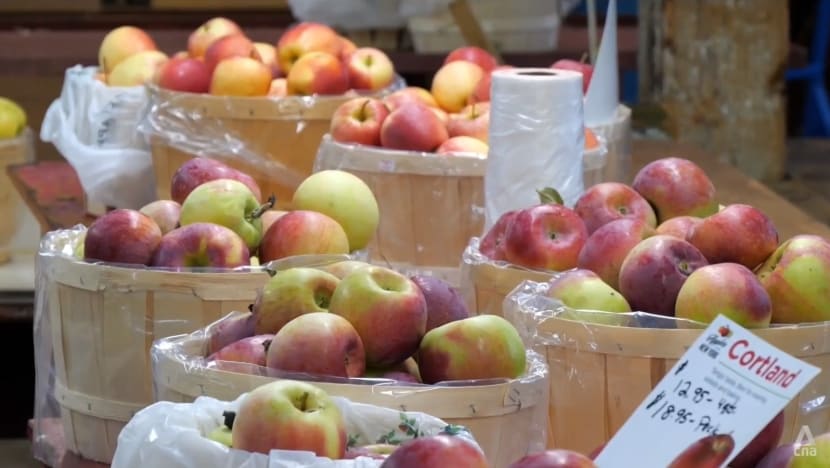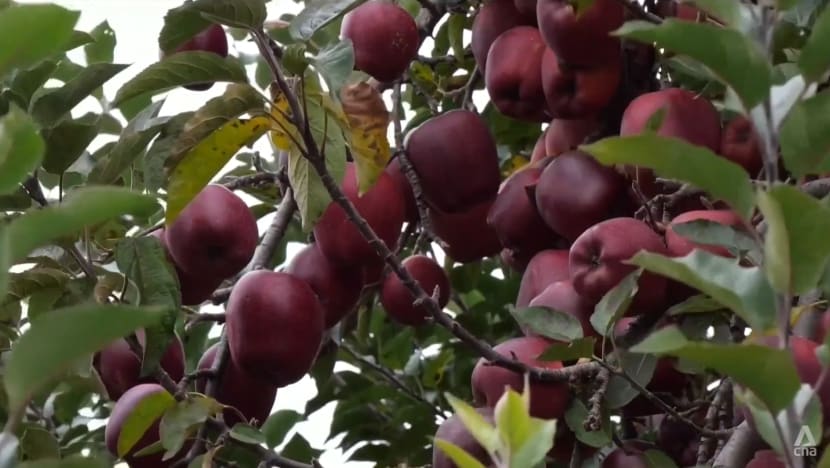New York apple farms face downpour of challenges as climate change threatens billion-dollar industry
Nearly 11 inches of rain fell on the region in September and October this year, which was 33 per cent above the normal levels, according to the American National Oceanic and Atmospheric Administration.

New York is the second-largest apple producing state in the country, behind only Washington.

This audio is generated by an AI tool.
NEW YORK: New York’s apple farms are feeling the devastating effects of climate change, with unprecedented rainfall hitting agrotourism hard across the state.
The last few months have been a wash-out for businesses which earn from customers picking their own produce.
Nearly 11 inches of rain fell on the region in September and October, which was 33 per cent above the normal levels, according to the American National Oceanic and Atmospheric Administration.
New York is the second-largest apple-producing state in the country, with the sector comprising more than 500 commercial growers.
The industry contributes US$1.3 billion annually in total economic output, according to the New York Apple Association.
However, changing weather patterns are threatening the future of their industry, farmers told CNA.
AGROTOURISM HIT
Thousands of apple pickers typically flock to farms across New York annually to fill their baskets with fresh produce during harvest season.
However, this year has been different, with drizzly weather dampening the industry’s prospects.
Some farms have reported a 30 per cent drop in business this autumn, with many families choosing to stay at home instead of heading outdoors to pick their own produce.
Unharvested fruits still weigh down the trees at farms, such as Barton Orchards.

“Last year, we had the total opposite – we had a drought. But the apple crop survived the drought and we had every single weekend available, it was just extremely dry,” Mr Wayne Monoe, staff services manager at Barton Orchards, told CNA.
“This year with the rain, we lost at least eight days.”
The farm could not operate for at least half of the eight weekends of the harvest season, which runs from the start of September to the end of October, said Mr Monoe.
On a good day, up to 8,000 people could stream through the farm’s gates, including children from New York City seeking a change of scenery from the urban buzz.
“But this year, some days saw just a couple of hundred visitors,” said Mr Monoe.
BEYOND APPLES
Apart from apple picking, farmers across New York have also faced a drop in other agrotourism activities, with attractions only hosting a handful of visitors.

At Stuart’s Fruit Farm, for instance, dangerous and muddy conditions meant hay rides were parked and the corn mazes did not open.
The business of letting visitors pick their own produce usually drives the farm’s annual profits, but this has been the toughest fall in its 51 years of operation, according to owner Bob Stuart.
The bakery on the farm, run by Mr Stuart’s daughter and son-in-law, is also not making the usual amount of sales.
“As farmers, we have to adapt. I’ve been doing it all my life and Mother Nature’s not going to beat me,” Mr Stuart told CNA.
“When I retire, it’s because I want to, not because I have to.”
KEY PART OF NEW YORK ECONOMY
The evolving weather patterns due to climate change are threatening the survival of New York’s apple producing sector.
The industry is an important part of New York’s economy, as the state is the second-largest apple producer in the country, behind only Washington.
Ms Annette Nielsen, executive director of the NYC Food Policy Center at Hunter College, emphasised the role local farmers play in ensuring the state’s food security.
“We certainly don’t want to lose our farmers (as) we rely on them for really great and safe food sources,” she told CNA.
“I don’t think we necessarily want to rely on food coming from a couple of thousand miles away across the state, or even across the globe. It’s much better to have a local source, and a traceable one, and we have that here in New York.”
As the threats and risks from climate change continue growing, farmers remain worried that unpredictable weather could be a core issue in the years to come.














